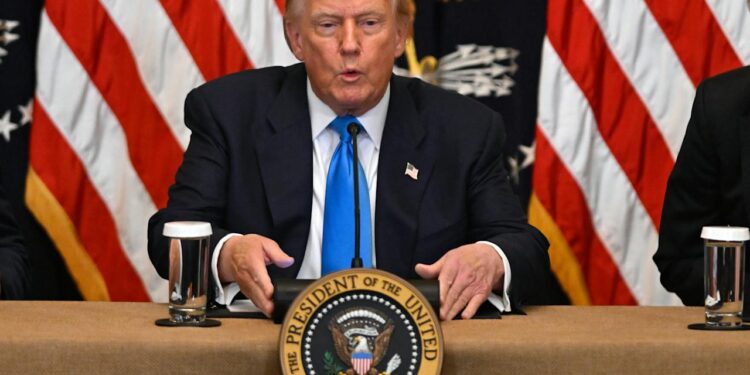In a dramatic escalation of U.S. trade policy, President Donald Trump has unveiled a sweeping tariff plan that will affect nearly every country trading with the United States. The policy, which takes effect on August 7, introduces a two-tiered system of levies on imported goods, marking one of the most comprehensive shifts in American trade doctrine in generations.
The plan applies a 10% tariff on imports from countries where the U.S. runs a trade surplus, while countries with trade deficits, roughly 40 in total, will face a steeper 15% tariff. Brazil, for example, has been hit with a 50% tariff after a sudden surcharge increase, despite the U.S. recording a surplus with the country just last year. The administration has described the policy as a necessary rebalancing of trade relationships that have, in its view, long disadvantaged American workers.
Unlike previous tariff regimes that were often framed as negotiating tools to reach trade deals, this new framework positions tariffs as a standing feature of U.S. economic policy. In a brief White House statement, Trump called the move a “correction decades in the making,” arguing that prior administrations failed to protect domestic labor markets from exploitative trade practices.
The announcement has already drawn skepticism from trade economists, industry groups, and global allies. Experts say the breadth of the policy is without precedent in the postwar era. Comparisons have emerged with the early 1930s, when the Smoot-Hawley Tariff Act worsened the Great Depression by triggering retaliatory tariffs and collapsing international trade flows. While today’s global economy is more complex and diversified, the risk of a trade contraction remains real, particularly for sectors exposed to global supply chains.
In the Pacific Northwest, those risks may be especially acute. Seattle’s economy is tightly woven into international trade, through its seaport, its aerospace manufacturing, and its high-value software and services exports. From the Port of Seattle to the corporate campuses in Bellevue and Redmond, businesses depend on both open markets and predictable trade rules. Agricultural exporters, aircraft component suppliers, and cloud service providers could all face retaliation from affected nations, raising costs or reducing market access just as global demand remains shaky.
The administration has indicated it is open to negotiating bilateral deals, but has offered few details on how exemptions will be handled or what conditions might qualify. Even close allies such as Japan, South Korea, and the European Union are not fully shielded, each facing the baseline 10% tariff despite existing trade agreements. That has left both U.S. trading partners and domestic industries uncertain about how “fairness” is being defined, and what recourse might be available.
What remains unclear is whether this strategy will compel foreign governments to alter their trade practices, or instead lead to hardened retaliatory positions. While the administration casts its plan as restoring balance, the reality for many businesses may be navigating a landscape marked by volatility, slower deal-making, and the risk of long-term frictions in supply chains that have taken decades to build.
For a globally connected city like Seattle, where local jobs are often tied to the health of international trade, the implications of this new policy may show up early, on docks, in boardrooms, and possibly in employment reports before the end of the year.







